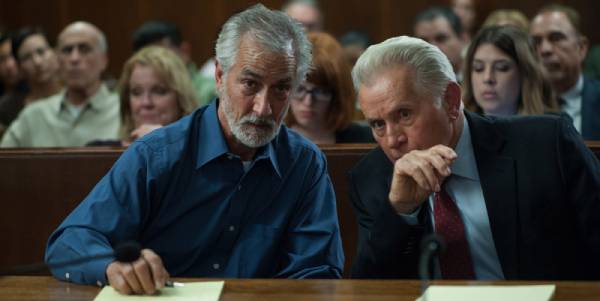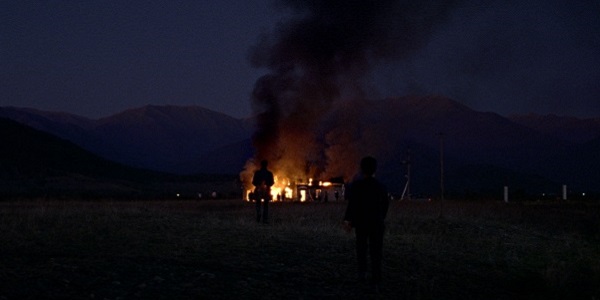THE DEVIL HAS A NAME: A Little Overworked and Undersold
Edward James Olmos has been in the business for over 45 years, establishing himself as one of the go-to Latin talents of his generation. From Blade Runner to Miami Vice, Battlestar Galactica to the recent Sons of Anarchy spin off, The Mayans, Olmos has cropped up in a variety of different roles – each one proving his gravitas as an actor. For The Devil Has a Name, he sits in the director’s chair for the fourth time, not including the episodes he directed for the likes of Battlestar Galactica and Miami Vice.
A Farmer’s Life
Based on true events that took place in California’s Central Valley, The Devil Has a Name takes aim at Big Oil’s practice of dumping toxic waste in bodies of water all over the Central Valley. This practice proved extremely hazardous not only for the health of the occupants of the land – who drank and bathed in water that was likely contaminated with an untold number of pollutants – but also for the farmers whose crops would wilt and die before yielding produce.

David Strathairn plays one such farmer, Fred Stern. Fred is reeling from the recent death of his wife when a young, sleazy oil executive (played by a game Haley Joel Osment, who seems to be making a niche for himself with these kinds of roles) appears and offers him money for his land. Stern has his sights set on buying a yacht and fulfilling a dream with his wife to go sailing around the Gulf of Mexico and so is tempted by the – suspiciously low – offer. That is until he discovers his crops are dying as a result of said oil company’s dumping. Realising he’s been played, Stern enlists the help of his foreman Santiago (Olmos), and a socially conscious lawyer (played by Martin Sheen) to take down the oil company once and for all.
Big Oil
On the side of Big Oil, we have Gigi (Kate Bosworth), whose interview with shadowy corporate men, fronted by Alfred Molina, provides the narrative framework for The Devil Has a Name. Gigi has to explain the outcome of the ensuing court battle to her bosses and so much of what we see comes from her version of events. Finally, rounding out the trio of bad guys is Pablo Schrieber‘s nameless cartoony villain, complete with a dirty southern drawl and a shit-eating grin. He is ostensibly the main Big Bad here, pulling strings and antagonising just about everyone, on his side or not.
The best scenes here are the ones featuring Strathairn, Sheen, and Olmos. They are three heavyweight actors, masters of their craft, who handle the dialogue with natural charisma, batting one-liners back and forth. All three are on top form, and these scenes feel tight and add the gravity this movie needs. Unfortunately the same can’t really be said for the bad guys. One wonders if Bosworth and Schreiber made a bet before production of the film over who could chew the most scenery. If that was the case, they both gave it their all. Bosworth‘s Gigi mopes around, gazing at everything with disdain while spitting out frankly ridiculous one-liners like “it was nut cuttin’ time”. There’s even an overextended scene where she spills coffee on her carpet and, apparently in the midst of a breakdown, pulls out a knife and begins cutting her carpet to shreds. It all feels a little over the top and threatens to send the movie spiraling into melodrama at times.

Schreiber‘s character is no better, in fact arguably worse. He struts around determined to suffocate every scene with his smugness, ensuring that he feels little more than a 2D composite of a stereotypical corporate slimeball. He too is burdened with leaden dialogue like “you have no idea how high I intend to fly”, and “this is not just a lawsuit, it’s a revolution”, and as good an actor as Schreiber really is, even he can’t quite pull it off.
Most of the scenes featuring he and Bosworth have that feel to it, which is a shame given how talented they both are. Special mention, too, goes to Alfred Molina; an incredible actor who here feels reduced to something akin to a Foglorn Leghorn impersonator spouting off sentences such as “no wants to blame their baby boy or little Miss-Suck-a-Dick for their own immolation”. For all that Olmos was able to gather an incredibly talented cast, hampering them with dialogue that a college production might feel was a little too unrealistic, seems wasteful.
Narrative Cohesion
Elsewhere the cohesion of the film feels a little off. The first half of the film is peppered with stylistic images of a toxic chemical making its way through a water supply, but then this visual thread is completely cut halfway through, which feels jarring like Olmos just lost interest in the idea and abandoned it. The back and forth between Stern and the oil company he’s fighting is also fairly confusing at times. Gigi has been sent by the oil company to ensure they win the court battle, but Schreiber has also been sent by the company to ostensibly antagonise Gigi and make things worse by suggesting to Stern that he could actually make far more money than he was originally asking for. The timeline of events lacks the narrative propulsion to keep it suspenseful and unfortunately, many of the scenes fall flat because of it.

None of this is to say The Devil Has a Name is a bad movie. With a cast like this, there’s always a reason to watch and as mentioned before, Sheen, Straithairn, and Olmos give plenty of reasons to stay interested. Olmos‘ character Santiago could have been, in different hands, far less developed. Here, though, Olmos gives him an obsession with taking pictures on his phone and a socialist/revolutionary idealism which tracks with the movie’s agenda. What Olmos is trying to highlight here is the current environmental climate during the Trump administration. Real-life policies which allow companies to dump chemical waste are exposed and more than a few people will find themselves Googling Net Present Value comes to the credits (as the film helpfully points out, the math is simple: if you make more money doing something than it will cost to be caught doing it, then it’s worth doing). However, compared to recent films such as Dark Water, or even Erin Brockovich, to whom The Devil Has a Name shares a likeness, it feels a little toothless and it could have perhaps balanced itself much better in an attempt to tell a serious cautionary tale.
Conclusion
The Devil Has a Name is worth watching for its message and for the strength of its three leading protagonists. With actors like Strathairn, Sheen, and Olmos at the helm there are plenty of enjoyable scenes, which make up for the lack of believable dialogue and the hammy acting occasionally on display. Olmos has gathered an incredible cast around him and is clearly passionate about the story he’s trying to tell. It’s just a shame the message gets a little lost in some of the contrived drama.
There have been a number of environmentally conscious films made within the last decade. Which is your favourite? Let us know in the comments!
The Devil Has a Name will be released on Digital and VOD on October 16th in USA and October 19th in the UK.
Watch The Devil Has a Name
Does content like this matter to you?
Become a Member and support film journalism. Unlock access to all of Film Inquiry`s great articles. Join a community of like-minded readers who are passionate about cinema – get access to our private members Network, give back to independent filmmakers, and more.
Join now!





